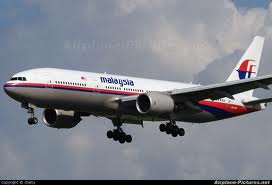 Beijing – Amidst all the rumor and speculation surrounding the baffling disappearance of Malaysia Airlines flight MH370 bound for Beijing, politically charged suggestions that terrorists were to blame carry the gravest implications for China.
Beijing – Amidst all the rumor and speculation surrounding the baffling disappearance of Malaysia Airlines flight MH370 bound for Beijing, politically charged suggestions that terrorists were to blame carry the gravest implications for China.
Chinese and Malaysian officials are playing down the idea, in the absence of any evidence to support it. But that has not stemmed online allegations pointing the finger at Uighur separatists from the predominantly Muslim province of Xinjiang. Last week, the Chinese authorities blamed Uighur Islamic extremists for a knife attack in the southwestern city of Kunming that left 33 people dead and more than 100 wounded, though they have not produced any of the eight suspects whom police say they have detained.
“I am afraid the incident was launched by Xinjiang people,” read one such conjecture posted by @Chen Lei on the Tencent social media platform. “It is time to investigate Xinjiang and kill those who should be killed.” Of the 239 passengers aboard the plane, 154 were Chinese.
Chinese Foreign Ministry spokesman Qin Gang warned against such rumor-mongers on Monday. “The investigation of the incident is still under way. It is too early to jump to conclusions,” he told reporters. He urged the public to “stay calm and … avoid circulating unconfirmed information.”

Ability to carry out such an attack?
The investigation into the disappearance of flight MH370 “must include counterterrorism investigators,” says Rohan Guneratna, a terrorism expert at Nanyang Technological University in Singapore, since two of the passengers on the plane were using forged passports.
China’s ambassador to Malaysia, Huang Huikang, told a reporter for Hong Kong Satellite TV that US Central Intelligence Agency officials were involved in the investigation because of “speculation about a hijack or terrorism,” according to a post on Sina Weibo, a Twitter-like social media platform, by the TV reporter.
“Aviation security has been breached. ETIM is the only group with the operational capacity and intent to carry out attacks like this,” he adds, referring to the East Turkestan Islamic Movement, a shadowy Uighur group whose existence some other international security experts dispute.
In Kuala Lumpur, police Inspector General Tan Sri Khalid Abu Bakar said on Monday evening that one of the two passengers carrying a false passport had been identified from airport closed circuit TV footage and that “he is not from Xinjiang, China,” according to The Star, a Malaysian newspaper. He refused to disclose the man’s identity or nationality, other than to say that he was not Malaysian.
No Uighur organization has ever shown the sort of operational capacity required to smuggle explosives onto an international flight and blow it up. Three Uighurs were sentenced to death in 2012 in a closed trial for allegedly trying to attack the cockpit of a Chinese domestic airliner with sharpened crutches, and in 2008 a Uighur woman was accused of bringing gasoline onto a plane in soda cans. The Chinese authorities have never publicly produced evidence to support those charges.
The presence on flight MH370 of two passengers carrying forged passports that had been stolen in Thailand is not as suspicious as it might seem, according to Xu Ke, a former airline pilot who now teaches at the Zhejiang Police College in eastern China.
“I think it is most likely that the two foreigners carrying forged passports were illegal migrants” heading to Europe, he says. Both had bought tickets at the same time in Thailand for one-way trips from Kuala Lumpur to Amsterdam via Beijing. One of the passengers carrying a foreign passport was then booked to fly to Copenhagen, Denmark, and the other to Frankfurt, Germany, according to the Associated Press.
Doubts mid-air explosion
Such people-smuggling through China is not uncommon. In January, a group of six illegal migrants carrying forged passports, transiting through Beijing Capital airport en route to Europe, were detected and detained, according to a report in the Legal Evening Post, a Beijing daily published by the ruling Communist Party.
Mr. Xu also doubts that the Malaysia Airlines Boeing 777 blew up in mid-air, given the lack of visible debris in the ocean near the spot where Malaysian air traffic controllers lost touch with the plane.
“If there had been an explosion, debris would have been detected by now” over a large area, assuming that search and rescue teams are looking in the right place, says Xu. “But nothing has been found. I think the possibility of an explosion is slight.”
Xu points out similarities between Saturday’s apparent tragedy and the sudden disappearance in 2009 of an Air France plane over the Atlantic, which crashed into the sea without any emergency call for help from the pilots. That was later found to be the result of mechanical failure and pilot error, though the plane was flying through a severe storm at the time, while the weather was fine when the Malaysia Airlines plane dropped off the radar.
“We simply do not have enough evidence to draw any conclusions yet,” says Xu.
No credible claims or responsibility have emerged, so far, for bringing the Malaysian airliner down.
An email signed by “The Leader of the China Martyrs’ Brigade” declaring that the incident was “a response to the Chinese authorities’ harsh crackdown and persecution of Uighur people” appeared to be a hoax. Even Boxun, the often unreliable Chinese exile website that published the email, dismissed it.
Malaysia Monitor
Leave a Reply
You must be logged in to post a comment.